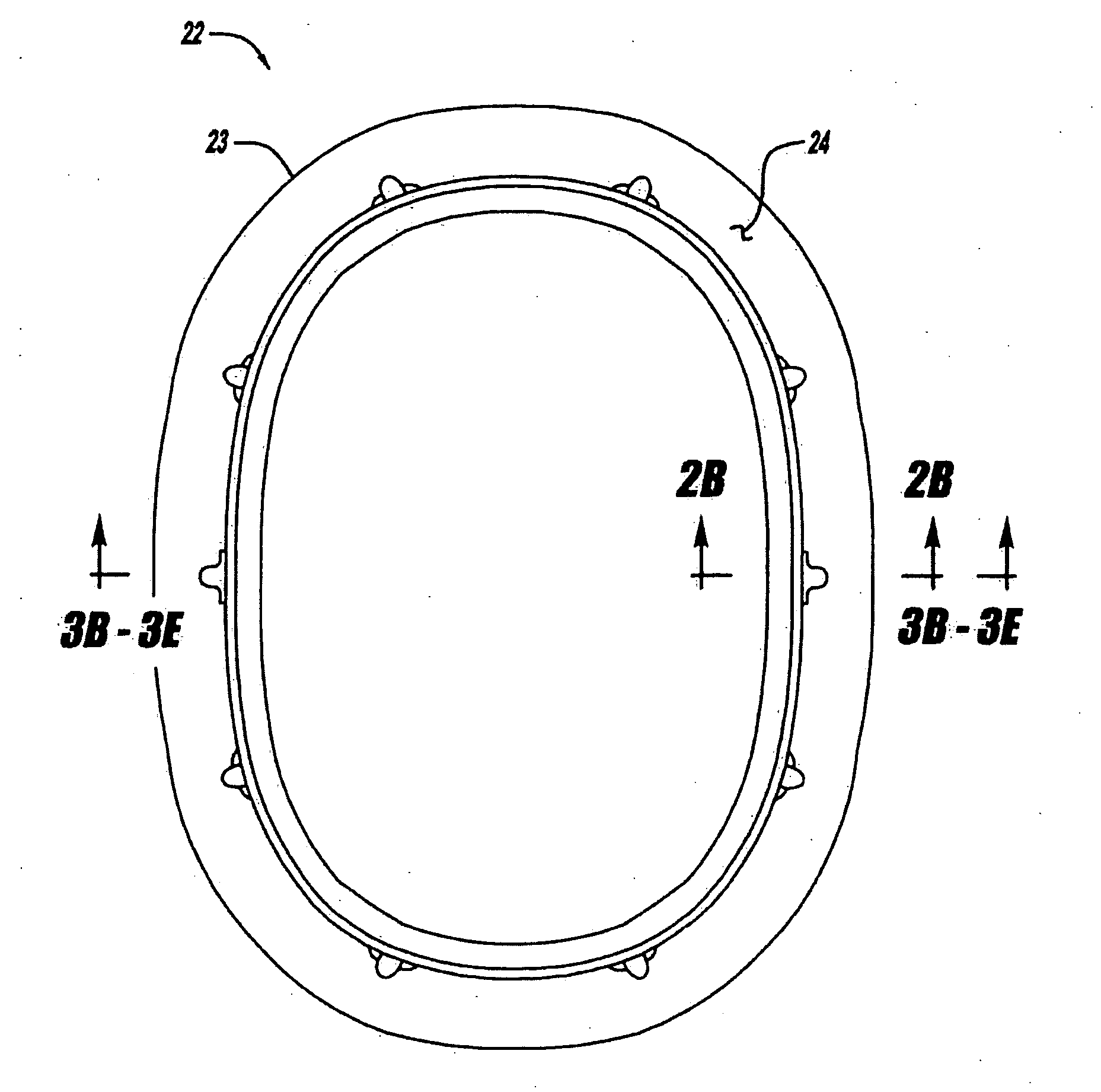Laminated passenger window with a vacuum layer for reduced noise transmission
a technology of laminated passenger windows and vacuum layers, which is applied in the direction of fuselages, transportation and packaging, chemistry apparatuses and processes, etc., can solve the problems of undesirable interior noise, remained at undesirable levels, and each has its share of limitations
- Summary
- Abstract
- Description
- Claims
- Application Information
AI Technical Summary
Problems solved by technology
Method used
Image
Examples
first embodiment
[0031] Another path of noise propagation, from the aircraft exterior 104 to the rubber seal 102 is noted by arrow 116. The rubber seal 102 lies within the c-ring 24. The flange 30 and web 32 provide support to the rubber seal 102, which helps secure the window layers 108, 110, 112. The advantage of the window 100 of the first embodiment over the baseline window of FIG. 3A, is that increased sound dampening is achieved, at least because of its thicker outer layer 112 and its greater edge amount that abuts against the rubber seal 102. By dampening or eliminating noise, passenger comfort inside the aircraft is increased. In the case of noise path 116 the noise may propagate through the outer layer 112, but will then be partially or completely dampened by the rubber seal 102.
[0032] Turning now to FIG. 3C, a second embodiment of the present invention will be explained. The window 120 of the second embodiment has an increased number of layers, from three to four, over the second embodimen...
fourth embodiment
[0040]FIG. 5 is a comparison graph that depicts the vibration reduction, in decibels (dB), achieved with the fourth embodiment window 160 having an outer pane of 0.22″ acrylic, 0.05″ visco-material, and 0.12″ glass. This particular window, known as the “visco-elastic window”, is depicted in FIG. 3E. The vibration reduction is calculated using the following formula:
Reduction (dB)=20 log(X2 / X1)
where X1 is the velocity PSD of the prior art window of FIG. 3A and X2 is the velocity PSD of the fourth embodiment window 160. Although the calculation was performed in terms of structural velocity, it is assumed that the normal velocity of the window is directly proportional to the radiated acoustic pressure. Therefore, the noise reduction associated with the fourth embodiment window is also represented by FIG. 5.
[0041] The results depicted in FIG. 5 are relative to the baseline window of FIG. 3A. As an example, the fourth embodiment visco-elastic window dampens 6 decibels more at 200 Hz tha...
PUM
| Property | Measurement | Unit |
|---|---|---|
| Weight | aaaaa | aaaaa |
| Force | aaaaa | aaaaa |
| Viscosity | aaaaa | aaaaa |
Abstract
Description
Claims
Application Information
 Login to View More
Login to View More - R&D
- Intellectual Property
- Life Sciences
- Materials
- Tech Scout
- Unparalleled Data Quality
- Higher Quality Content
- 60% Fewer Hallucinations
Browse by: Latest US Patents, China's latest patents, Technical Efficacy Thesaurus, Application Domain, Technology Topic, Popular Technical Reports.
© 2025 PatSnap. All rights reserved.Legal|Privacy policy|Modern Slavery Act Transparency Statement|Sitemap|About US| Contact US: help@patsnap.com



